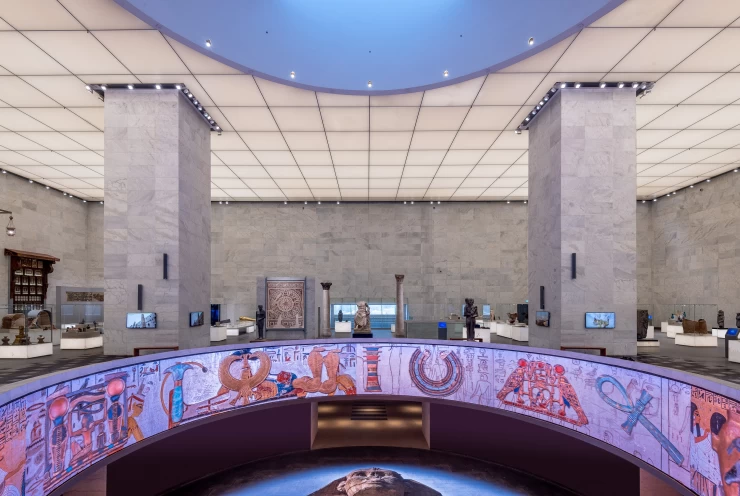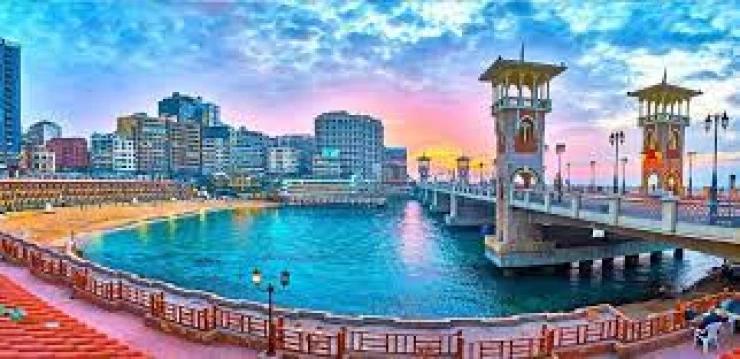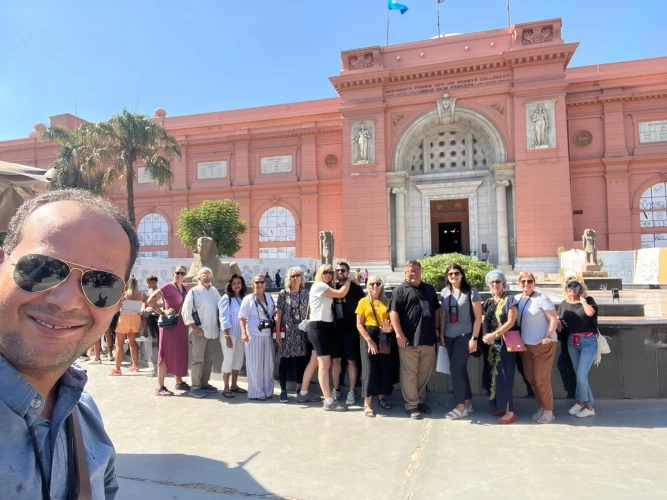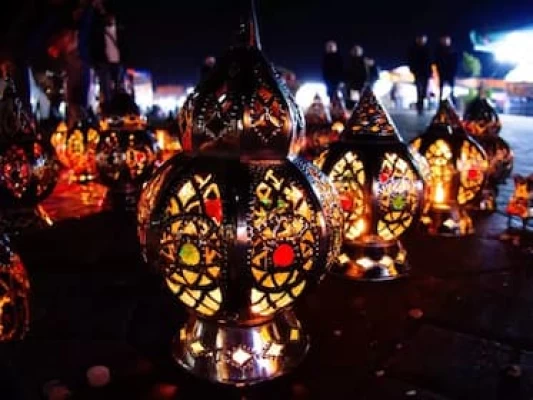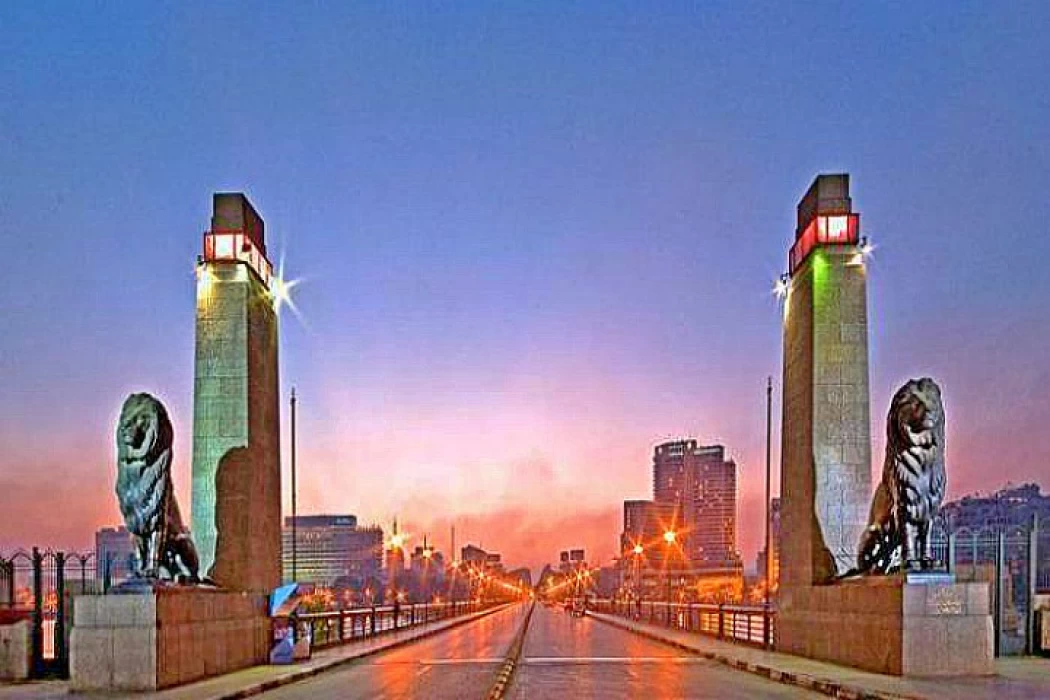
Qasr El Nil Bridge
Qasr El Nil Bridge in Cairo
The Khedive Ismail Bridge "Kasr El Nil Bridge". The first bridge was established to cross the Nile, near Tahrir Square in Cairo, and it is considered the first bridge established in Egypt to cross the Nile, and it is characterized by these four statues of lions sitting at the entrances of the bronze bridge.
The story of the establishment of the Nile Palace Bridge began with Khedive Ismail's thinking of establishing a bridge linking Tahrir Square, which was then known as the “Ismailia Square”, and the West Bank of the Nile in the Gezira region following the cities of Europe that link the bridges between its banks. People were moving in this period between The banks of the Nile, using river transport, through sailboats, which line up next to each other, and over which wood panels are stretched for people to walk on.
The construction work of the bridge began in 1869 when Khedive Ismail issued the Higher Order for Implementation of the construction, and the project was assigned to the French company, and the cost of the project reached about 113 thousand Egyptian pounds, and the construction took about 3 years and the length of the bridge reached 406 meters and its width 10 meters and a half meters inclusive Sidewalks whose width is two and a half meters, and it was decided to impose transit fees according to the type of crossing the bridge. Men and women are a quarter of a penny, and children and deer are exempt from fees and carts full of goods.
After the July 1952 revolution, the bridge’s name was transferred to the Nile Palace Bridge. ”Then the bridge witnessed one of the most important events that it witnessed. Many still remember the funeral of the late President Gamal Abdel Nasser in September 1970 when it was broadcast on Egyptian television as it crossed the Nile Palace Bridge for 15 minutes.

Prsedint Gamal Abdel Nasser
During the following 4 decades, the bridge became one of the most famous landmarks of Cairo, and many Egyptians and foreigners even came to take memorial photos next to or above the black bridge, which exceeded the reputation of the bridge itself.
The Tourism In Aswan | Aswan Tourism Process tells us about how people built big buildings a long time ago, like when the ancient Egyptians were around. It also teaches us interesting things about what happened in the country a really long time ago.







